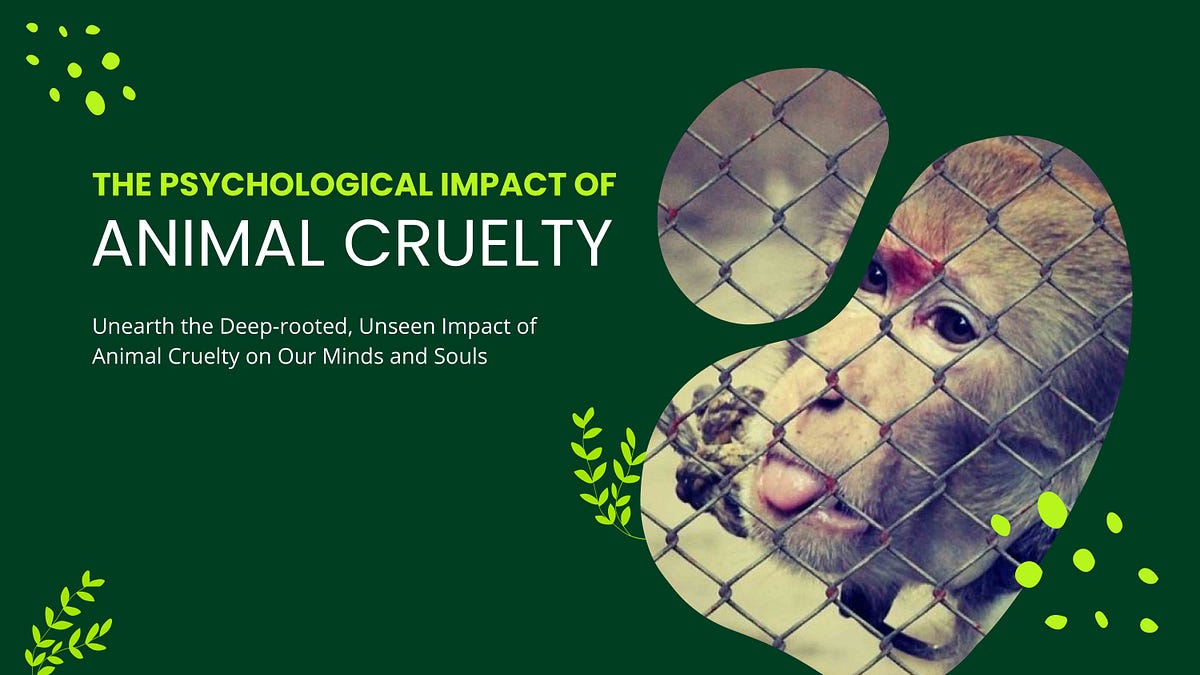Animal cruelty, often overlooked in society, unveils a troubling spectrum of behaviors and attitudes rooted in psychological complexities. The pervasive nature of apathy towards the suffering of animals raises critical questions about human emotional responses. To delve into the mindset that fosters such indifference, one must examine the psychological architecture behind these harmful beliefs. Understanding the motivations that lead individuals to agree with or dismiss animal cruelty is not just a philosophical exercise; it is a pivotal step toward instigating a revolution in empathy.
At the core of animal cruelty is a chilling detachment—an emotional distance cultivated through a tapestry of cognitive biases and societal norms. This detachment can manifest in various forms, from passive acceptance to active justification. The dangerous psychology of apathy is often rooted in the concept of desensitization. When individuals are repeatedly exposed to tragic images and stories of animal suffering, their emotional responses can dull over time, leading to what psychologists describe as emotional numbing. This phenomenon isn’t confined to animal welfare; it permeates other areas, such as humanitarian crises, where constant exposure can foster a sense of helplessness and disengagement.
Furthermore, the theory of cognitive dissonance plays a crucial role in shaping perceptions of animal cruelty. When people’s beliefs contradict their actions—such as enjoying meat while acknowledging animal suffering—it can provoke a psychological discomfort that breeds apathy. To mitigate this dissonance, individuals may rationalize or downplay the severity of animal abuse, adopting a mindset that distances them from the reality of the situation. Thus, by downplaying the significance of animal suffering, they can continue their lifestyles without facing uncomfortable truths, perpetuating a harmful cycle.
The influence of social norms cannot be overstated in this context. Societal attitudes shape our beliefs, often normalizing cruelty towards animals in various forms—be it through industrialized farming practices, entertainment, or neglect. When societal norms promote indifference, individuals often align their views accordingly, further entrenching apathy. Animals become mere commodities, stripped of their sentience. This societal acceptance can breed an insidious belief: that cruelty is either a necessary evil or an inconsequential aspect of life.
Compounding this issue is the phenomenon of moral disengagement. This psychological mechanism allows individuals to view animals as lesser beings, unworthy of empathy or moral consideration. By disengaging from their moral responsibility towards animals, people justify their actions or maintain their apathy. It becomes easier to ignore the suffering of animals when they are perceived as objects rather than sentient beings deserving of compassion. This detachment not only impacts individual actions but also perpetuates systemic cruelty.
However, the psychology behind apathy is not inextricable. A pivotal shift in perspective can occur through education and exposure to empathetic narratives. Individuals who engage with stories of animal rescue, witness the bond between humans and animals, or are educated about the sentient nature of non-human beings can experience an awakening of empathy. This cognitive empathy is critical in dismantling the apathy that has been cultivated. Through increased awareness, individuals can confront the uncomfortable truths about animal suffering that they may have previously ignored.
Moreover, fostering compassion through community initiatives can shift attitudes. When individuals witness collective action against animal cruelty, it can counteract feelings of helplessness and inspire proactive change. The emotional contagion of empathy can create a ripple effect, with one person’s compassion eliciting a response from another. This is evident in grassroots movements that raise awareness through advocacy, promoting the well-being of animals, and encouraging a collective reexamination of societal norms.
In addition, the role of empathy in altering perceptions of animal cruelty cannot be underestimated. Empathy, defined as the ability to understand and share the feelings of others, is a fundamental human trait. However, it must be cultivated. Programs aimed at instilling empathy in children—especially toward animals—can set the foundation for a more compassionate future. Children educated on the ethical treatment of animals are less likely to develop apathy as adults, creating a generational shift in attitudes toward animal welfare.
The interplay between psychological mechanisms and societal attitudes highlights the complexities of animal cruelty and apathy. While apathy may seem like a mere lack of concern, it is, in reality, a profound psychological challenge with extensive implications. The normalization of animal cruelty, bolstered by cognitive biases, desensitization, and moral disengagement, creates an environment where indifference flourishes.
Ultimately, understanding the psychology behind agreeing with animal cruelty offers a pathway to profound societal change. It is essential to confront and dismantle the psychological defenses that enable apathy. By fostering empathy, engaging in meaningful discourse, and challenging societal norms, individuals can become catalysts for change. The quest for compassion is not merely about protecting animals; it is about redefining our shared humanity. In our ability to empathize lies the promise of a world where animal cruelty is relegated to the annals of history, a past we collectively refuse to repeat. The time is ripe for this transformation, demanding that we challenge our beliefs, confront our indifference, and pursue a compassionate future for all living beings.









